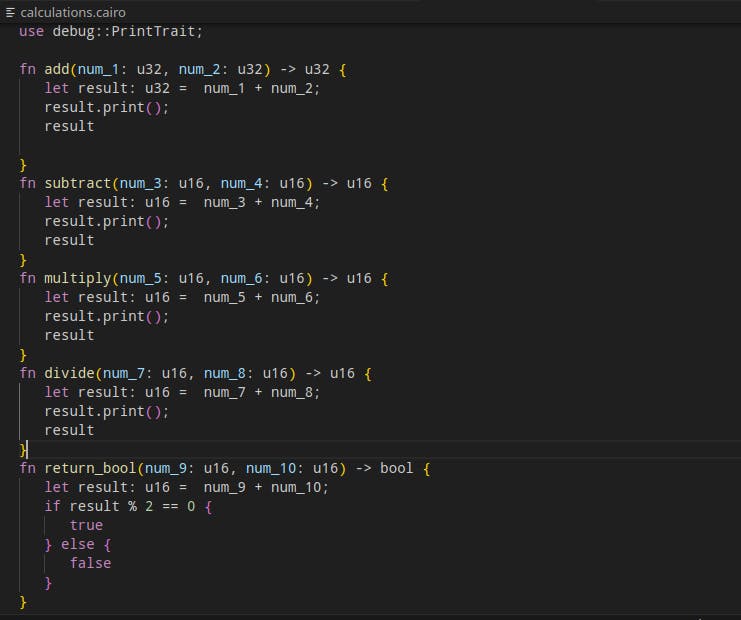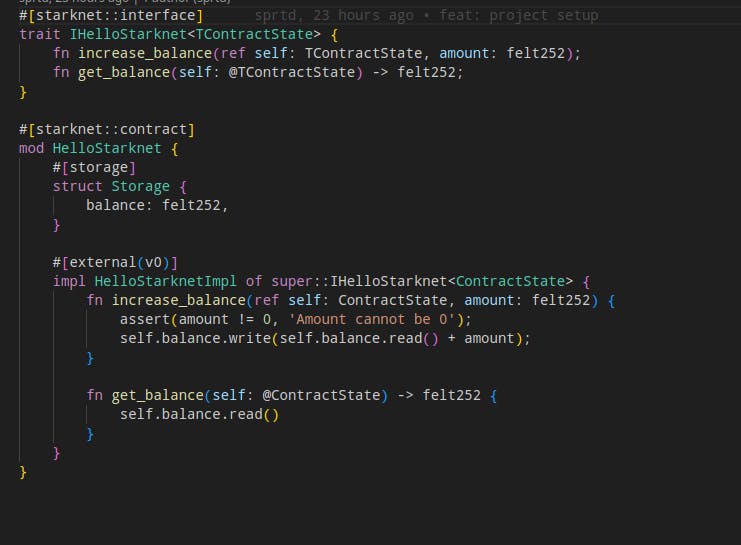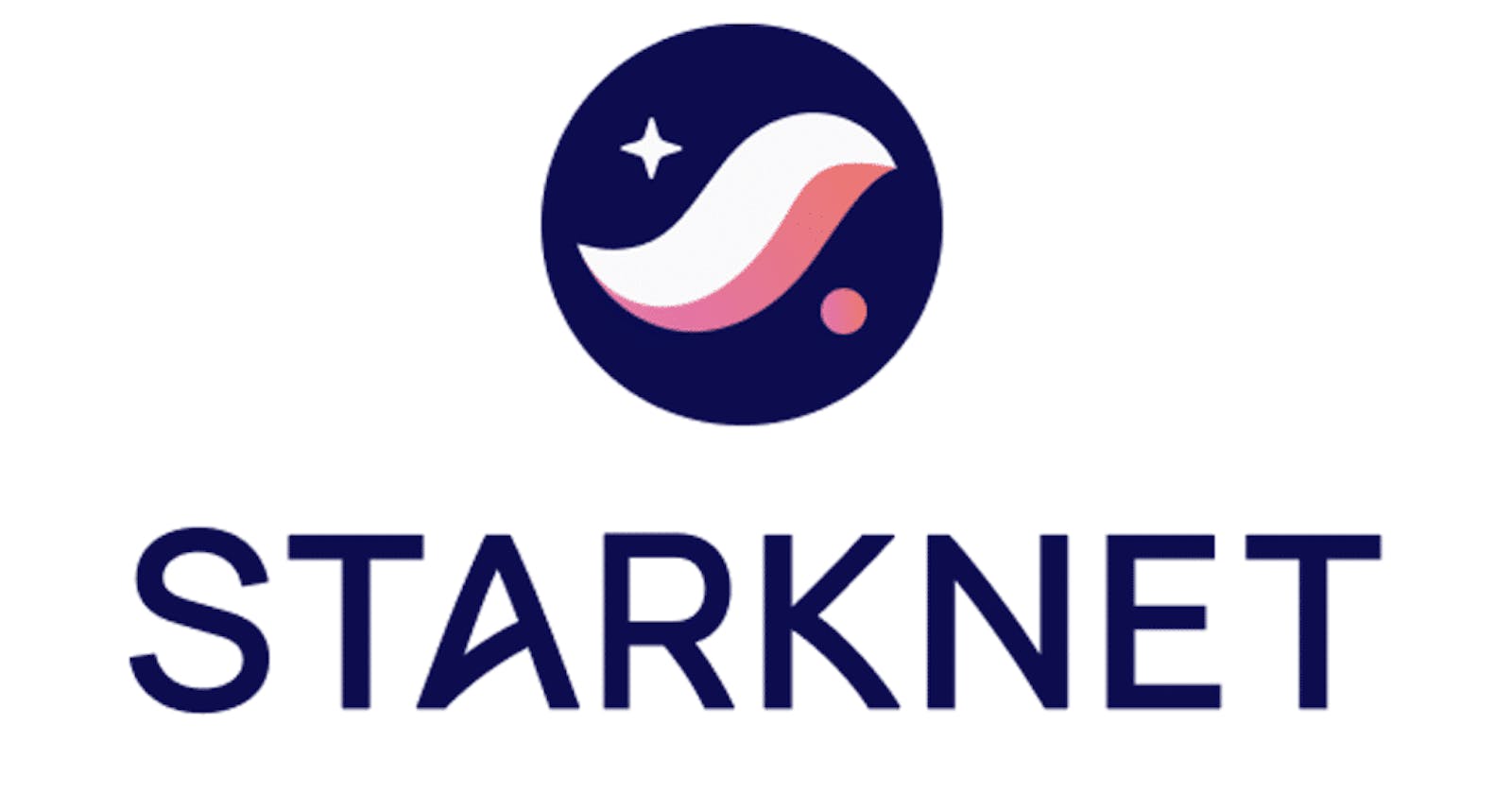Introduction
Starknet is a rising star of scalability solutions, gaining much traction in the blockchain space. Cairo is used as its programming language. A lot of users are onboarded into the Starknet ecosystem daily. However, newcomers might be confused by some important terminology, especially as a developer.
One of such confusion is the differences between Starknet programs and contracts. While both entities play important roles within the Starknet ecosystem, they serve distinct purposes and possess unique characteristics. In this article, we will delve deeper into unveiling the key differences between Starknet programs and contracts.
Starknet Programs
You can look at Starknet programs as multipurpose tools that can perform any computation allowed by the Starknet virtual machine. They serve as the building blocks for more complex functionalities.

Above is an example of a Starknet program, that performs simple calculations.
Features of Starknet Programs
Versatility: This means they can perform a wide range of tasks as long as those tasks are compatible with the Starknet VM. Examples of such tasks include;
Mathematical calculations, such as Solving complex equations, performing cryptographic operations, and more
Data manipulation like Sorting, filtering, and transforming data sets.
Algorithmic execution: such as Implementing and running any algorithm compatible with the Starknet VM.
Limited Scope: Although Starknet programs are powerful, they have a limited scope compared to Starknet contracts. Some of such limited scopes are;
Storing data: It is impossible for Starknet programs to directly store information on the Starknet network. Meaning they have no access to the Starknet state.
Interaction: They cannot interact directly with other contracts, such as send transactions or calling other contracts.
System calls: Starknet programs are restricted from accessing certain system functionalities.
- Standalone: Starknet programs are designed to run independently of external contracts for their functionality. This explains why they can perform computations without needing additional dependencies.
Starknet Contracts
Starknet contracts are an integral part of the Starknet ecosystem. It enables developers to build powerful and versatile decentralized applications (dApps). It is designed specifically for the Starknet platform, with some unique characteristics that make it different from its counterparts on other blockchain platforms.

The above code snippet is a simple Hello Straknet implementation.
Features of Starknet Contracts
Specialized Functionality: Starknet contracts are not general-purpose, unlike Starknet Programs. They are designed with specific functionalities, such as:
- Tokenizing assets: Creating and managing digital tokens representing various assets.
Facilitating exchange: Starnet Contracts enable decentralized trading of various assets through DEXes.
Implementing lending protocols: Starnet Contracts allows the creation of systems for borrowing and lending digital assets.
Building interactive applications: Developing complex dApps with engaging user experiences.
- Full Access: Starknet contracts unlike Starnet programs enable unrestricted access to the Starknet ecosystem. Such that they can:
Store data: Persist information on the Starknet network, enabling continuous operation.
Interact with other contracts: Send transactions and call other contracts for collaborative functionality.
Perform system calls: Access various functionalities provided by the Starknet system.
- Persistence: Starknet contracts maintain their state across transactions. This allows them to retain information and continue functioning seamlessly even after multiple interactions!
Examples of Starknet Contracts
Non-fungible tokens (NFTs): Represent unique digital assets like artwork or collectables.
Decentralized exchanges (DEXes): Enable peer-to-peer trading of crypto assets.
Lending protocols: Facilitating borrowing and lending of digital assets with interest.
Games: Creating interactive and engaging gaming experiences on the blockchain.
Choosing between programs and contracts
Using Starknet programs is your option if;
you require just computing power and don't want to engage with the Starknet environment.
For isolated computations, you need a small, effective solution.
You have to run particular algorithms, manipulate data, and do mathematical computations.
Your goal is to create the foundation of a more intricate contract.
Use Starknet contracts if:
You have to do system calls, store data, and communicate with other contracts within the Starknet ecosystem.
You wish to develop a sophisticated application with specialized features, such as games, DEXes, lending protocols, or tokenised assets.
For your application to remain in the same state between transactions, persistent data storage is required.
Conclusion
In conclusion, Starknet programs and contracts, while both integral to the Starknet ecosystem, serve distinct purposes and have unique characteristics. Starknet programs, as multipurpose tools, can perform a wide range of tasks compatible with the Starknet virtual machine, making them versatile and standalone. However, they have limited scope, and are unable to store data, interact directly with other contracts, or access certain system functionalities.
On the other hand, Starknet contracts are designed for building powerful and versatile decentralized applications (dApps) on the Starknet platform. They offer specialized functionality, full access to the Starknet ecosystem, and persistence, allowing them to store data, interact with other contracts, perform system calls, and maintain their state across transactions.
Choosing between Starknet programs and contracts depends on the specific needs of the project. As highlighted above.
Understanding the differences between Starknet programs and contracts is crucial for developers onboarding into the Starknet ecosystem, as it helps in making informed decisions based on the specific requirements of their projects
